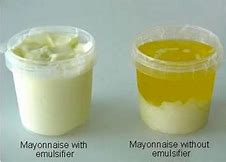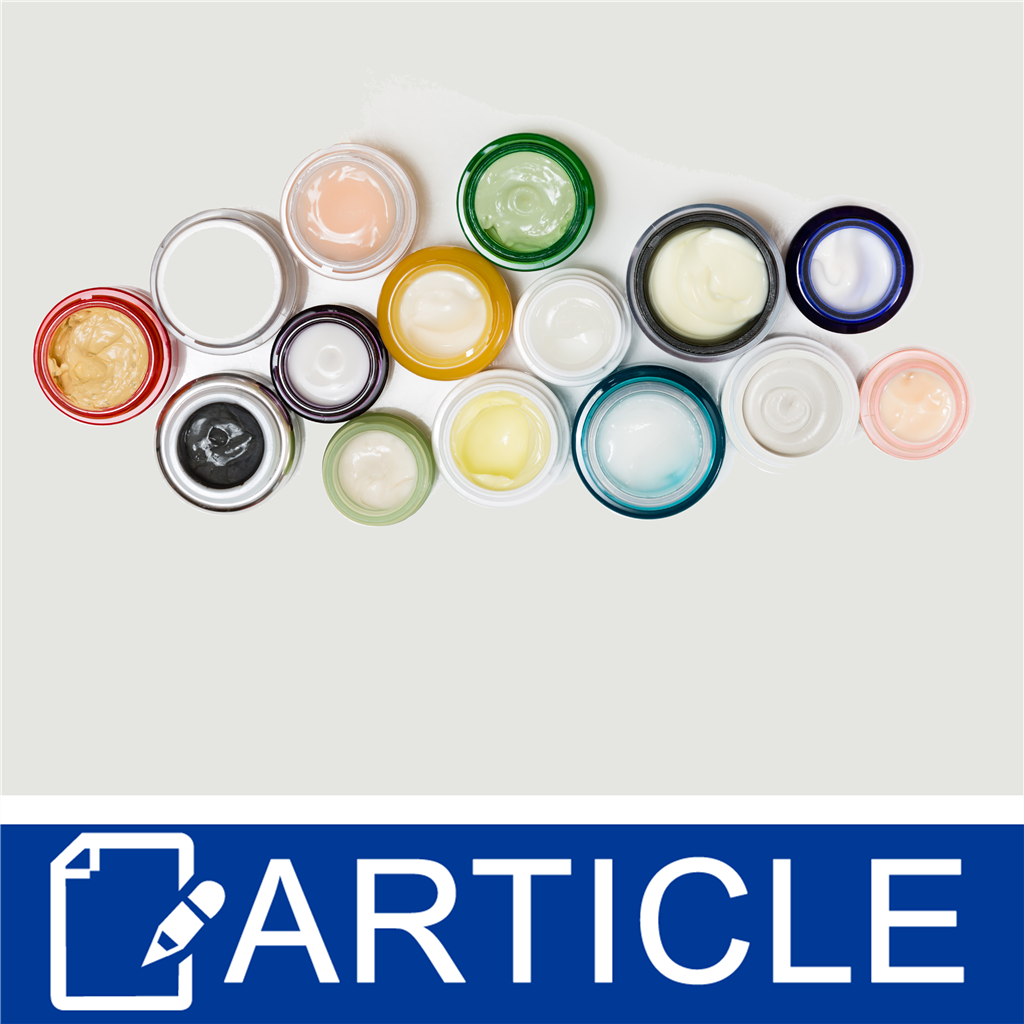Breaking down emulsifiers in sauces
The Necessary Advantages of Emulsifiers for Smooth and Steady Mixes
Emulsifiers are important in producing secure and smooth blends across numerous sectors. They reduce surface area tension between immiscible liquids, resulting in boosted appearance and overall sensory experiences. In food and cosmetics, their role expands beyond mere blending; they additionally enhance service life and item stability. Recognizing the kinds and applications of emulsifiers reveals their significance in formula procedures. Nevertheless, the nuances of their effectiveness warrant further expedition.
Understanding Emulsifiers: The Science Behind the Blend
Although emulsifiers are frequently neglected in daily cooking and food manufacturing, they play a necessary function in maintaining mixtures that would certainly otherwise separate. Emulsifiers are substances that lower surface stress between 2 immiscible liquids, such as oil and water. They have both hydrophilic (water-attracting) and hydrophobic (water-repelling) properties, allowing them to interact with both phases. This distinct particular makes it possible for emulsifiers to create a stable interface, avoiding the separation of fluids and fats.
Typical instances of emulsifiers include lecithin, typically originated from eggs or soybeans, and mono- and diglycerides. These materials create a consistent appearance in products like mayo, salad dressings, and sauces. The scientific research behind emulsifiers lies in their capacity to develop a steady solution, which is important for attaining desirable food high quality and life span. Recognizing the function of emulsifiers is essential for food scientists and culinary specialists intending for constant results.
Culinary Applications: Enhancing Flavor and Appearance
Emulsifiers considerably enhance culinary applications by boosting both flavor and structure in a selection of food (emulsifiers). They play a vital function in creating steady emulsions, which are important for sauces, dressings, and mayo. By making it possible for the even circulation of fats and water, emulsifiers guarantee that tastes are well-blended and unified, boosting the overall taste experience
In baked products, emulsifiers add to a better crumb framework and boosted moisture retention, causing items that are soft and appealing. Furthermore, they help expand rack life by preventing splitting up and preserving quality.
In dairy products, emulsifiers aid in creating smooth textures, vital for items like ice lotion and lotion cheese, where mouthfeel substantially impacts consumer satisfaction. Generally, making use of emulsifiers in culinary applications not just raises taste accounts but additionally improves the sensory experience of various food things, making them more enjoyable and enticing.

Aesthetic Uses: Producing Glamorous Formulations
When formulating aesthetic products, the inclusion of emulsifiers is crucial for attaining lavish and smooth structures. These representatives help with the blending of water and oil phases, creating stable solutions that improve product efficiency and customer experience. Emulsifiers not only enhance the uniformity of lotions and creams yet additionally add to the overall sensory attributes, permitting an extra positive application and feel on the skin.
Furthermore, emulsifiers play an essential function in the effective distribution of active ingredients, making sure that they stay equally dispersed throughout the formulation. This consistent distribution improves the product's efficiency, providing targeted advantages such as hydration, anti-aging, and defense. Moreover, the best emulsifier can impart a wanted viscosity, avoiding separation and keeping item stability gradually. Inevitably, emulsifiers are important in developing high-quality cosmetic formulas that fulfill consumer assumptions for deluxe and effectiveness.
Sorts of Emulsifiers: All-natural vs. Synthetic
Understanding the distinctions in between synthetic and all-natural emulsifiers is important for formulators intending to optimize aesthetic items. Natural emulsifiers, obtained from plant or pet sources, include components like lecithin, beeswax, and various gums. They are frequently preferred for their skin-friendly homes and biodegradability. Additionally, they can boost the sensory profile of formulas, supplying an extra attractive structure and really feel.
On the other hand, artificial emulsifiers are chemically crafted to create certain capabilities and stability. Usual instances consist of polysorbates and stearic acid. These emulsifiers generally supply superior efficiency relating to emulsification efficiency and shelf-life security. They might increase problems pertaining to skin sensitivity and ecological impact.
Eventually, the choice between navigate here artificial and all-natural emulsifiers relies on the desired item characteristics, formula goals, and customer preferences, highlighting the significance of understanding their unique residential or commercial properties. emulsifiers.
The Role of Emulsifiers in Food Preservation

Tips for Utilizing Emulsifiers Properly in Recipes and Products
When utilizing emulsifiers in products and dishes, choosing the ideal kind is important for achieving preferred results. In addition, utilizing correct mixing strategies can greatly enhance the security of emulsified combinations. Comprehending storage techniques and rack life assures the longevity and effectiveness of these emulsifiers.
Choosing the Right Emulsifier

Selecting the suitable emulsifier can substantially boost the texture and security of a blend, as the best option depends upon the specific active ingredients and desired result. Different aspects influence this decision, consisting of the kind of oils or fats, the presence of water, and the target uniformity. As an example, lecithin is optimal for dressings and sauces, while xanthan gum tissue works well in gluten-free baking. In addition, the emulsifier's compatibility with various other active ingredients plays a significant duty in attaining the you could look here wanted stability. It is important to take into account the temperature range of the application, as some emulsifiers execute far better under certain problems. Ultimately, understanding the features of each emulsifier will bring about extra reliable solution in recipes and products.
Correct Blending Methods
Utilizing reliable blending methods is essential for achieving optimal emulsification in dishes and products. It is important to present emulsifiers gradually, enabling them to spread evenly throughout the combination. High-shear mixing methods, such as using an immersion or a blender mixer, can enhance emulsifier efficiency by damaging down fat globules. Keeping a constant temperature during blending likewise help in achieving a secure emulsion, as fats and liquids can blend much more effectively when heated. Additionally, incorporating active ingredients in the correct order-- starting with the fluid phase complied with by the fat phase-- makes sure even distribution. Mixing must proceed till the preferred consistency is gotten to, staying clear of over-mixing, which can lead to separation. Appropriate strategies ultimately bring about smoother, much more stable emulsions.
Storage and Service Life
The performance of emulsifiers can considerably enhance the quality of blends, appropriate storage and attention to rack life are necessary for maintaining their efficiency. Emulsifiers should be saved in a great, completely dry environment, far from direct sunshine and dampness, which can degrade their buildings. It is suggested to keep them in airtight containers to avoid contamination and oxidation. In addition, checking the expiry days and adhering to advised storage space standards can optimize their efficiency. Regular evaluations of texture and stability in blends can indicate whether the emulsifier is still functioning efficiently. By complying with these storage practices, users can ensure that their emulsifiers remain potent, bring about continually smooth and secure combinations in recipes and items.
Regularly Asked Questions
Are Emulsifiers Safe for People With Dietary Restrictions?
Emulsifiers can be secure for individuals with dietary restrictions, depending on their resource and structure. It's necessary for those with allergic reactions or particular dietary requirements to thoroughly evaluate ingredient labels and consult with healthcare professionals.
Exactly How Do Emulsifiers Affect the Life Span of Products?
Emulsifiers boost the life span of products by maintaining mixtures, protecting against splitting up, and minimizing perishing. Their ability to keep harmony assists guarantee long life, ultimately protecting flavor, appearance, and general top quality in various food items.
Can I Make Emulsifiers in the house?
Yes, home made emulsifiers can be produced utilizing natural active ingredients like egg yolks, mustard, or honey. These alternatives can aid blend oil and water, yet results might differ based on the specific recipe and strategy made use of.
What Prevail Emulsifier Allergies to Look For?
Common emulsifier allergies consist of responses to soy lecithin, egg yolk, and dairy-based emulsifiers. Individuals with level of sensitivities might experience signs like hives, stomach distress, or breathing issues upon direct exposure to these components in numerous foodstuff.
Exactly How Do Emulsifiers Influence Nutritional Worth?
Emulsifiers can influence nutritional worth by improving nutrient absorption and bioavailability - emulsifiers. Too much usage might lead to nutrient loss or imbalance, potentially influencing wellness results, especially in refined foods where they are widespread.
Emulsifiers greatly enhance cooking applications by improving both taste and structure in a range of food items. In dairy items, emulsifiers help in developing smooth structures, crucial for products like ice cream and cream cheese, where mouthfeel substantially affects customer satisfaction. In the domain name of food preservation, emulsifiers play a substantial duty in preserving the high quality and shelf-life of various products. In products like salad dressings and click now sauces, emulsifiers help to preserve texture and flavor stability over time, making sure that the food remains enticing to customers. Common emulsifier allergies include reactions to soy lecithin, egg yolk, and dairy-based emulsifiers.